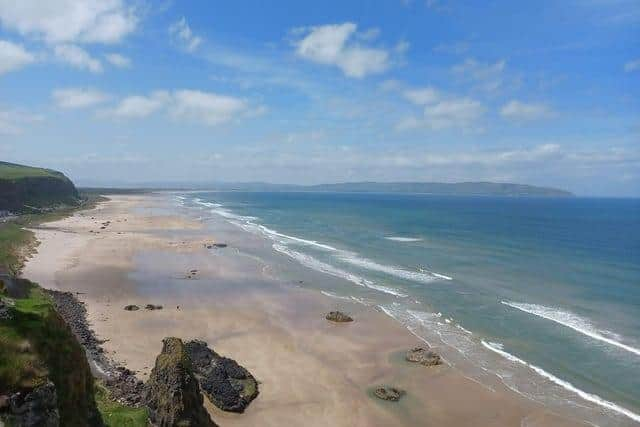Lough Neagh pollution had major impact on north Derry beaches with 25 ‘blue-green algae’ blooms
and live on Freeview channel 276
That’s according to DUP MLA Maurice Bradley, who has witnessed the consequences of excessive levels of nitrates and phosphates in the lough while fishing the Bann for trout and the north Derry beaches for fluke and bass.
Mr. Bradley told MLAs that while six rivers flow into Lough Neagh the Lower Bann is the only one that flows out before it ‘wends its way through counties Antrim and Londonderry to the Barmouth between Castlerock and Portstewart’.
Advertisement
Hide AdAdvertisement
Hide Ad"As someone who has had the privilege of fishing for white trout at Dougan's Bay in the tidal stretch of the Bann, fishing above the Cutts at the Loughan Island for salmon, including the Big Agivey and Wee Agivey rivers, and fishing at the beaches of Downhill, Castlerock and Portstewart for flounder and sea bass, I am all too aware of the debris that flows through the River Bann into the sea from Lough Neagh.


"That includes the irregular flow of water that is released from the lough during inclement weather and at times of high levels of water in the lough,” he said.
The problem of eutrophication – excessive nutrient levels – led to beaches from Magilligan to Castlerock being red-flagged for swimming several times last summer.
This was due to the presence of 'blue-green algae' – which is not actually caused by an algae but by an organism called cyanobacteria.
Advertisement
Hide AdAdvertisement
Hide AdLeachate from agricultural land and high water temperatures have been blamed.
Mr. Bradley said: “Last year, there were 25 confirmed instances of algal bloom between the Lower Bann at Toome and the Barmouth at Castlerock and Portstewart.
"It is not just Lough Neagh that is affected but the Lower Bann corridor, which is affecting angling and tourism, especially at north coast bathing beaches. Everything waterborne that emerges from Lough Neagh flows along the Bann and out to sea.
"Therefore, nitrates and phosphates need to be prevented from entering the lough at source.”
Advertisement
Hide AdAdvertisement
Hide AdHe suggested tree planting could prevent run-off from farmland pointing to a scheme initiated by the former agriculture minister Edwin Poots.
"We need to continue with that thought by planting riparian tree and vegetation cover along the rivers that enter Lough Neagh to catch some of the leachate from farmland,” he said.
During a debate in the Assembly several members pointed to the high water temperatures last year.
UUP MLA Steve Aiken said: “That our lough recorded a temperature of 17·4°C this summer, at the height of the algal bloom, shows that the lough is acting as a warning signal of the challenges that the climate emergency is bringing upon us.”
SDLP MLA Patsy McGlone, who lives in Ballinderry on the loughshore, said: “The annual mean temperature of Lough Neagh has also been rising in recent years, and there has been a marked decrease in the cloudiness of the water; both of which can contribute to the frequency of the algae blooms.”
Advertisement
Hide AdAdvertisement
Hide AdAgriculture minister Andrew Muir said the phenomenon was down to four factors: the highest water temperature ever; weather patterns during summer 2023; warmer waters and altered weather exacerbating algal blooms; and high excess nutrient levels.